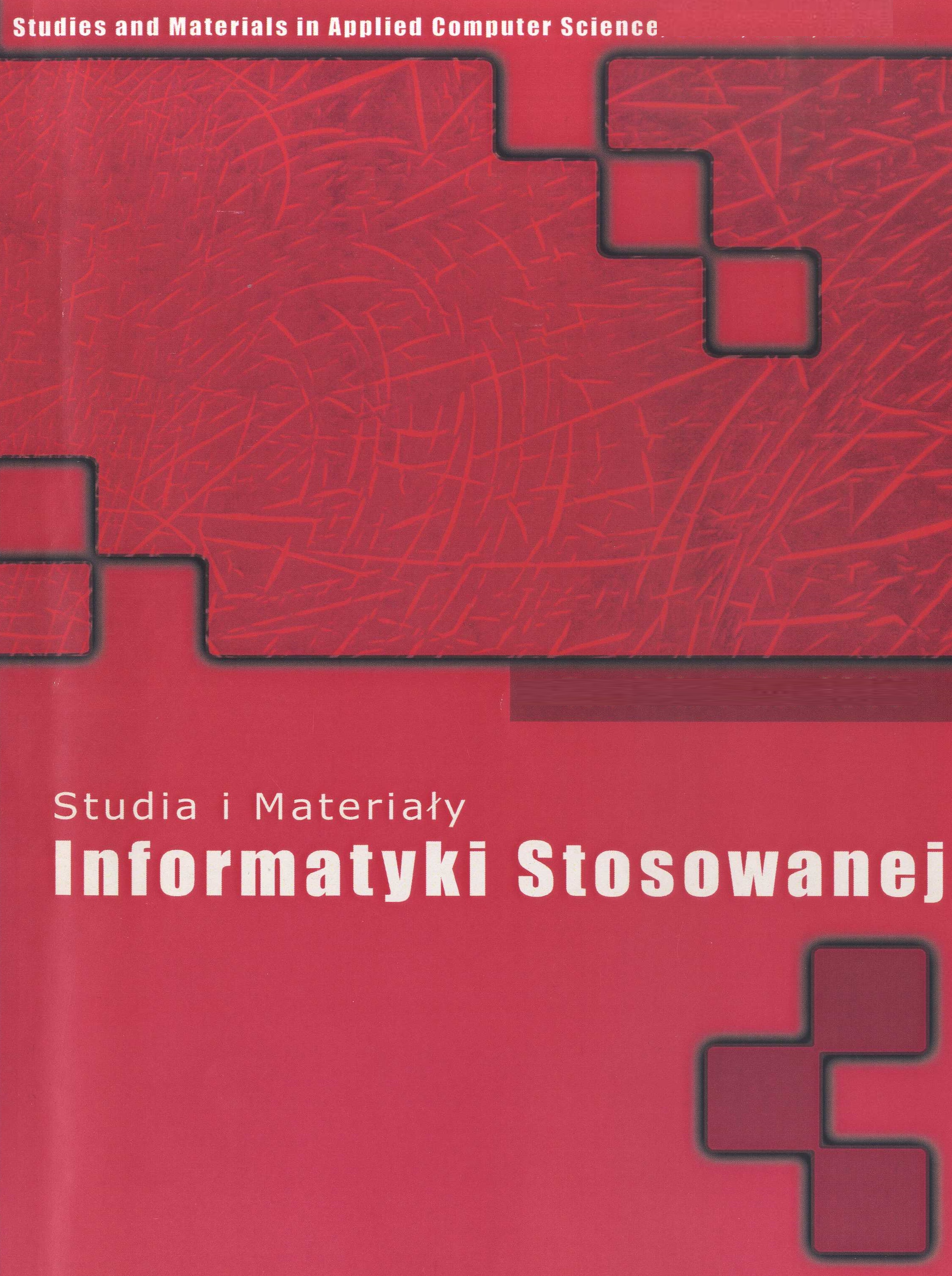Fraktalna analiza i predykcja zmian parametrów chodu
DOI:
https://doi.org/10.34767/SIMIS.2021.02.04Słowa kluczowe:
Analiza chodu, parametry fraktalne, klasyfikacjaAbstrakt
Chód jest jedną z najbardziej złożonych i najczęściej wykonywanych czynności przez człowieka. Cel pracy
był dwojaki: analiza metody obliczania miar fraktalnych chodu, klasyfikacja z wykorzystaniem sztucznych sieci
neuronowych (ANN) i ich przydatność w codziennej praktyce klinicznej oraz ustalenie minimalnego zestawu parametrów odzwierciedlających z wystarczającą dokładnością kliniczną zmiany u chorych po udarze mózgu. Badania przeprowadzono na podstawie danych archiwalnych 50 zdrowych osób chodzących i 50 chorych po udarze mózgu. Wykazano, że mniejsza liczba parametrów (wymiar fraktalny, indeks Hursta) pozwala na lepszy opis chodu. ANN są w stanie dokonać automatycznej oceny jakościowej, a nie tylko ilościowej chodu.
Bibliografia
Mandelbrot B. B. The fractal geometry of nature,W.H. Freeman, San Francisco (1982).
Prokopowicz P., Mikołajewski D., Tyburek K., Mikołajewska E. Computational gait anal-ysis for post-stroke rehabilitation purposes using fuzzy numbers, fractal dimension andneural networks. Bull Pol Acad Sci Tech Sci 2020, 68(2), 191-198 (2020).
Mikołajewski D., Mikołajewska E., Fractal analysis of gait, Studies and Materials in Applied Computer Science, 12 pp. 23-26 (2020).
Mikołajewska E. Nowe markery chodu w klinicznej analizie chodu w grupie pacjent ́ow poudarze m ́ozgu usprawnianych metoda NDT-Bobath. Wydawnictwo CM UMK, Bydgoszczy2017.
Kaczmarczyk K., Wit A., Krawczyk M., Zaborski J. Gait classification in post-strokepatients using artificial neural networks, Gait Posture, 30(2), 207-210 (2009).
Kostek B., Kupryjanow A. Wykorzystanie sieci neuronowych i metody wektor ́ow no ́snychSVM w procesie rozpoznawania aktywno ́sci ruchowej pacjent ́ow dotknietych chorobaParkinsona. [W:] Tadeusiewicz R., Korbicz J., Rutkowski L., Duch W. (red.) Sieci neuronowe w inżynierii biomedycznej. Tom 9. monografii: Torbacz W., Maniewski R., W ́ojcickiJ. M., Liebert A. (red.) Inżynieria biomedyczna – podstawy i zastosowania. AkademickaOficyna Wydawnicza EXIT, Warszawa 2013, ss. 239-262.
Ripoli A., Belardinelli A., Palagi G., Franchi D., Bedini R. An effective algorithm forquick fractal analysis of movement biosignals. J Med Eng Technol, 23(6), 216-221 (1999).
Phinyomark A., Larracy R., Scheme E. Fractal analysis of human gait variability viastride interval time series. Frontiers in Physiology, 11, 333 (2020).
Gates D. H., Dingwell J. B. Peripheral neuropathy does not alter the fractal dynamicsof stride intervals of gait, J Appl Physiol , 102(3), 965-971 (2007).
Dierick F., Nivard A.-L., White O., Buisseret F. Fractal analyses reveal independentcomplexity and predictability of gait, PLoS ONE 12(11), e0188711(2017).
Lopes R., Betrouni N. Fractal and multifractal analysis: a review. Med Image Anal.,13(4), 634-49 (2009).
Chau T. A review of analytical techniques for gait data. Part 1: fuzzy, statistical andfractal methods. Gait Posture 13, 49–66 (2001).
Chakraborty M., Das T., Ghosh D. Characterization of gait dynamics using fractalanalysis for normal and Parkinson disease patients, 2015 IEEE Power, Communication andInformation Technology Conference (PCITC), Bhubaneswar, 367–372 (2015). ImmersiveVirtual Reality to Restore Natural Long-Range Autocorrelations in Parkinson’s DiseasePatients’ Gait During Treadmill Walking.
Lheureux A., Lebleu J., Frisque C., Sion C., Stoquart G., Warlop T., Detrembleur C.,Lejeune T. Immersive Virtual Reality to Restore Natural LongRange Autocorrelations inParkinson’s Disease Patients’ Gait During Treadmill Walking, Front Physiol. 11, 572063,2020.
Mikołajewski D., Mikołajewska E., Prokopowicz P., Nedashkovskyy M. Wearable devicesin clinical gait analysis, Studies and Materials in Applied Computer Science, 10(1), 5-8(2018).
Mikołajewska E. Normalized gait parameters in NDT-Bobath post-stroke gait rehabilitation, Central European Journal of Medicine, 7(2), 176-182 (2012).
Mikołajewska E., Mikołajewski D. Roboty rehabilitacyjne. Rehabil. Prakt 4, 49-53 (2010).
Mikołajewska E., Mikołajewski D. Zastosowania automatyki i robotyki w wózkach dla niepełnosprawnych i egzoszkieletach medycznych. Pomiary Automatyka Robotyka 15, 58-63 (2011).
Mikołajewska E., Mikołajewski D. Roboty rehabilitacyjne i pielęgnacyjne. Mag. Pielęg. Położ 12, 42 (2009).

